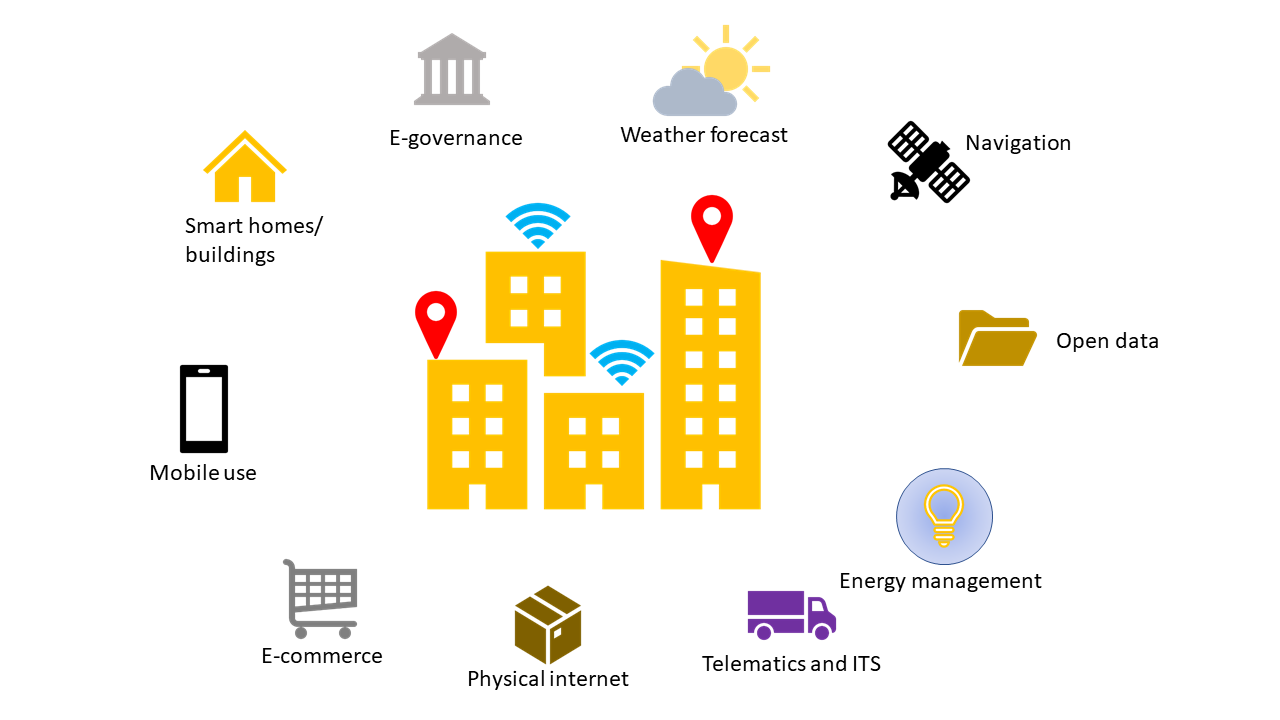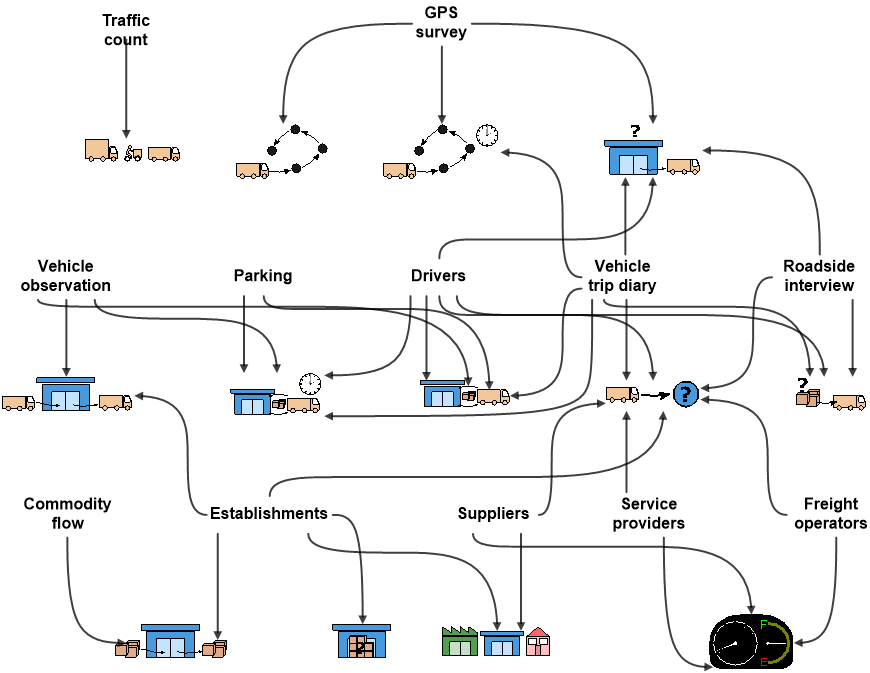5.2.1 Surveys and manual data collection
Course subject(s)
Module 5. Research in city logistics
We need data to build up our understanding of city logistics. Many cities are moving away from traditional data collection instruments to automated and diverse sources. While certainly the presence of new technology to collect, store and distribute the data has made this possible, more so is the need for more types of reliable data, at shorter intervals, and at lower costs. Whereas previously collecting data involved mass mobilization of surveyors to homes or companies, streets, or other transport generators, today through electronic means, surveys or invitations may be sent out en masse, quickly and cheaply.
Cities that incorporate the use of traffic sensors and build intelligent transport systems to manage traffic also have a huge stream of real-time reliable data. The advent of smart cities and smart management of many traditionally manual utilities are making a variety of data streams available (and in some cases open) to be exploited for analysis.

Figure 1. Smart cities produce many different types of data streams, which may be relevant for understanding urban freight (Source: CC0)
In the future, urban freight transport systems are expected to further incorporate electronic systems for the long-term, short-term and real-time planning and operations. The private and public sector are also gearing up to implement physical internet systems, which will also have its own share of challenges, while also opening the opportunities for newer more relevant data streams.
Though existing data collection methods may be superseded in the future by more automated techniques, it is still important to understand why and how data is collected now. Based on this, we can then take steps to fully or partially automate these steps where possible.
Purposes for collecting data
Previous lessons have covered the need for collecting data. In general, data is needed for evaluating the transport system. The data can be used for:
- Directly evaluating traffic impacts and nuisances,
- Building models for traffic and freight movement, or
- Soliciting public opinions of the UFT issues or solutions.
Surveys are conducted to gather specific and structured data, either by observation or by interviewing individuals.

Figure 2. The types of surveys and the types of data it can collect (Source: Survey and data by Tharsis Teoh /CC BY)
In the investigation of urban goods movement, the following categories of surveys can be distinguished (Allen et al 2012):
General surveys
General surveys are usually targeted indiscriminately to all commercial entities in order to capture freight transport from a macro-economic perspective.
Such surveys are usually quite comprehensive in scope of information requested, such as financial and business information of the company, the size of sales, the volume and value of freight moved (inbound and outbound), and the types of customers served.
Some examples are the:
- exhaustive UGM surveys (French national surveys, Emilia Romagna regional surveys in Italy),
- the commodity flow surveys (ECHO surveys in France, US commodity flow surveys) and
- commercial transport surveys (MID and KID in Germany).
Stakeholder-specific surveys
These surveys target specific types of stakeholders relevant to the UFT system, such as establishments, shippers, service providers, retailers, freight operators or commercial agents.
In contrast to general surveys, stakeholder-specific surveys can request specific information to the group of stakeholders, which may not be relevant to another type of stakeholders or useful to know for the surveyor. For example, carrier companies could be asked about their vehicle movement, while retailers could be asked about their sales.
Vehicle-specific surveys
Vehicle-specific surveys aim at capturing vehicle usage and driver practices, and is therefore more interested in micro- and operational-level data.
The more common survey methods involve driver interviews, vehicle observations, and vehicle trip diaries. There is also an increasing use of GPS data loggers to generate very detailed (about 1 second-resolution) data on vehicle movement and routes. This data should ideally be supplemented with the vehicle trip diary to correlate the state of the vehicle with the purpose of routes and stops.
Area-specific surveys
Some data collection purposes require a very specific geographical scope, such as road, shopping street, historical city centre, or at main traffic generators.
Area-specific surveys can be designed to collect very detailed information, either by observation or through interviews. Parking observations and traffic counts for example, can give detailed information (including the time dimension) to determine the occupancy and usage of transport facilities according to type of vehicles. Carrying out roadside interviews are more difficult, as drivers must be hailed and brought to the side of the road to be interviewed. Such surveys must be brief.

Sustainable Urban Freight Transport: a Global Perspecitive by TU Delft OpenCourseWare is licensed under a Creative Commons Attribution-NonCommercial-ShareAlike 4.0 International License.
Based on a work at https://ocw.tudelft.nl/courses/sustainable-urban-freight-transport-global-perspective/.



